Animal lovers, conservationists, and researchers have found great apes fascinating for their resemblance to humans, but when it comes down to basics, what are the fundamental differences between chimpanzees and gorillas? How similar are they?
Chimpanzees and gorillas are similar in that they are highly social, omnivorous, intelligent, and share some DNA with humans. However, gorillas are much bigger, stronger, and heavier than chimpanzees. They don’t spend as much time up in the trees as chimps and don’t live for as many years.
Let’s take a closer look at the key distinctions between these two wonderful animals.
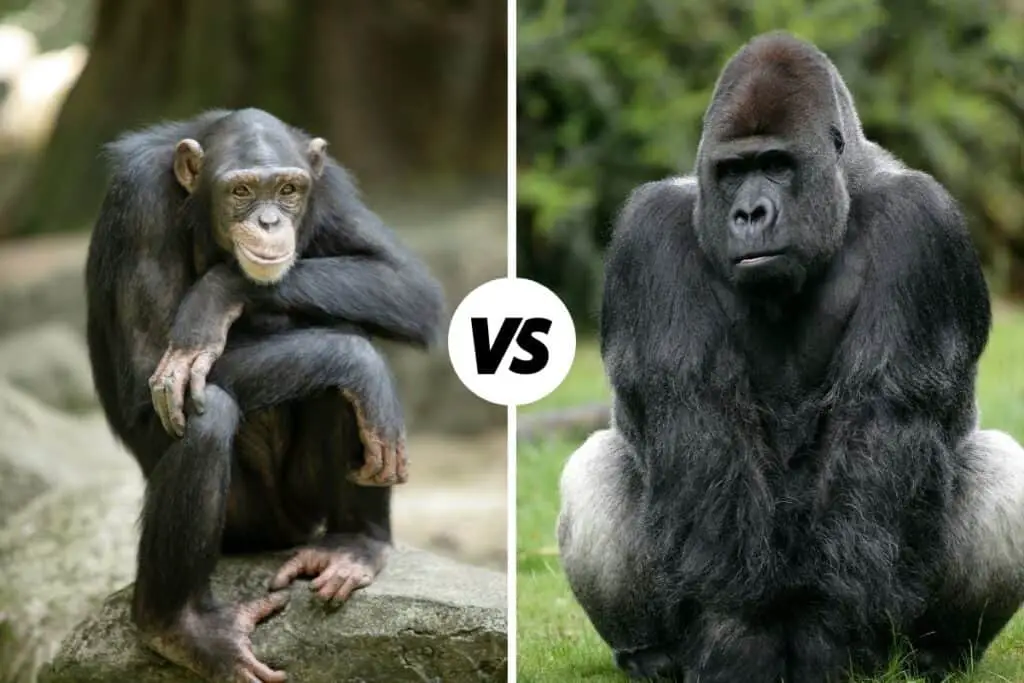
Chimpanzee vs gorilla: basic differences
When it comes down to telling the difference between chimpanzees and gorillas, you may think that size and shape is the defining factor.
There are several differences between the two – but also many shared traits. Both of these animals have in common that they are considered great apes, and this is more than just a reference to their size.
In movies, books, and stories, apes often feature roles that highlight their intellect, ability to imitate humans, and the attempts made by conservationists to study and communicate with them. Their likeness to humans has intrigued researchers for decades, and attempts to communicate and form relationships with them have been marginally successful.
Let’s learn more about these remarkable animals and how they differ.
All about chimpanzees
Chimpanzees are mammals often likened to humans for their many human-like traits and features. They are omnivores, like us, that eat a mixed diet of plants, vegetables and fruits, and meat.
While they are generally smaller in stature than the average man, they can weigh up to 130 pounds, stand up to 5.5 feet tall, and share around 98.7 percent genetic blueprint with humans.
It’s said among professionals that chimps and humans may have a common ancestor from around 13 million years ago. These great apes can move, solve problems, and share community in incredibly human-like ways.
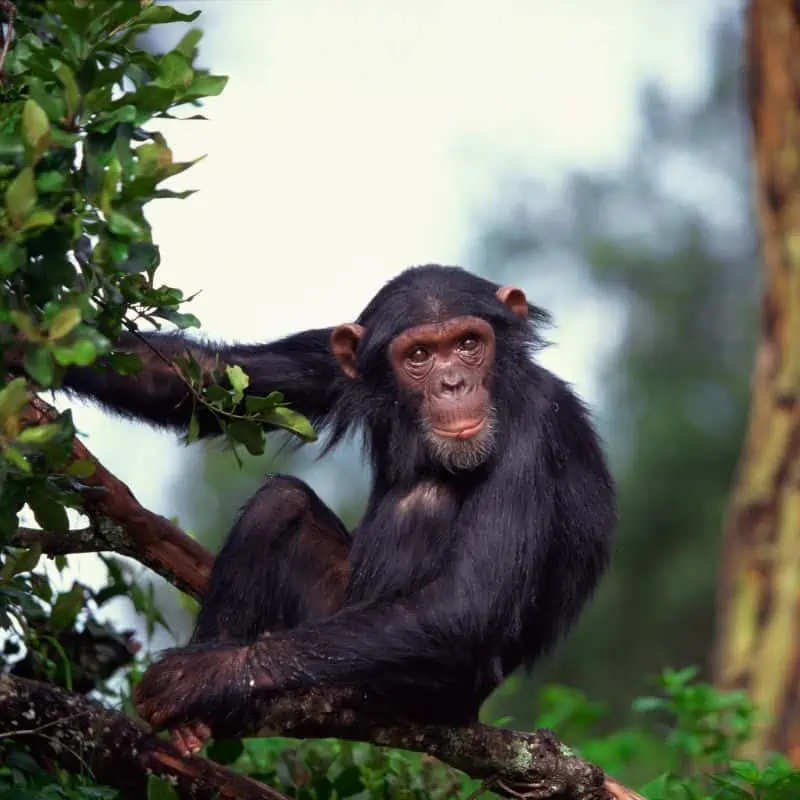
They are social, just like us, and live together in groups. An alpha male is usually in charge.
These great apes have been extensively studied, and it’s clear that individual chimps have distinct personalities, and females tend to be timider and more trusting. They form close bonds with their family and use grooming to strengthen bonds and help keep each other clean.
Another similarity that chimps have with humans is their ability to walk upright, although they prefer knuckle-walking and can move incredibly fast like this.
They have long arms that help them swing and climb between trees. These incredible animals are among the few species that use tools, much like ours.
They are known to shape sticks and use them to get to insects and grubs, and they use stones to break open nuts.
They’ve also been observed using leaves as sponges to soak up, squeeze out, and drink water – and they have been successfully taught how to use sign language.
Chimpanzees spend a great deal of time in trees among the rainforests, woodlands, and grasslands of central and West Africa, where they eat, sleep, and keep safe.
When it comes to reproduction, chimps carry one – or sometimes two – babies at a time, which they suckle and carry around on their backs after birth. Pregnancy lasts approximately eight months.
The biggest threat to chimpanzees is humans. Due to deforestation and the bush meat trade, the chimp population has declined substantially to the point where they are considered endangered.
They are also susceptible to viruses that affect humans, including Ebola.
All about gorillas
Gorillas are often called gentle giants, and while they have been observed to be mostly peaceful, they are incredibly strong and can be dangerous when they feel threatened.
Much like chimpanzees, they share some traits and behaviors with humans, and the shared genetic code between them and us is known to be at 98.3%.
There are two species of Gorillas, each of which is divided into two subspecies. Eastern Gorillas can be Eastern Lowland or Eastern Mountain Gorillas, while the Western species are Western Lowland or Western Cross River Gorillas. They are found in central Africa in dense forests or mountainous regions.
Like chimps and humans, gorillas are sociable and live in family groups of up to 30 individuals. A dominant male and a few females with their youngsters make up the troop. They also groom to solidify bonds.
Males who have reached maturity are known as silverbacks and incredibly powerful animals – experts believe them to be more than ten times stronger than humans.
They use their strength to tear down trees to get to the fruit or ward off perceived threats. They can bite with greater force than a lion.
There are some differences in size among the subspecies, but for the most part, gorillas can reach a height of up to six feet and weigh as much as 500 lb.
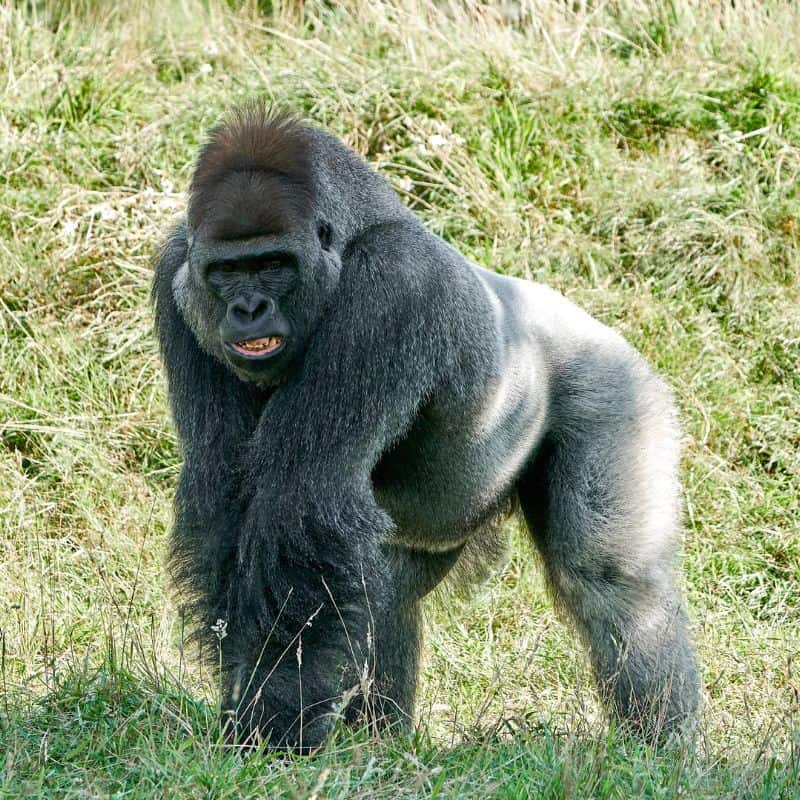
Gorillas are primarily herbivorous, eating plants, vegetation, roots, fruit, and shoots.
Experts have observed them eating small animals and insects, but much of their diet depends on their habitat. Snails, grubs, caterpillars, and other insects appear on their menu.
Regarding reproduction, gorillas carry their babies for around eight and a half months. They reach maturity between seven and eight years old and can live up to 40 years in the wild. Threats to these large apes come from deforestation and the bush meat trade, courtesy of humans. They are also considered endangered species.
Famous gorillas, like Koko, have shown their intelligence through the ability to learn sign language. They have been extensively studied, and it’s been found that they also use simple tools, similar to humans and chimps.
Main differences between chimpanzees and gorillas
Although they are both great apes, there are some differences between gorillas and chimpanzees.
These differences include:
Size
Gorillas are much larger and bulkier than chimps, outweighing them by more than double in mass alone. This means they are not quite as agile.
You’re more likely to find adult gorillas on the ground while chimps will happily be swinging and climbing in trees.
Lifespan
Gorillas have a lifespan between 30 and 50 years, while chimps generally live longer – from 50 to 60 years.
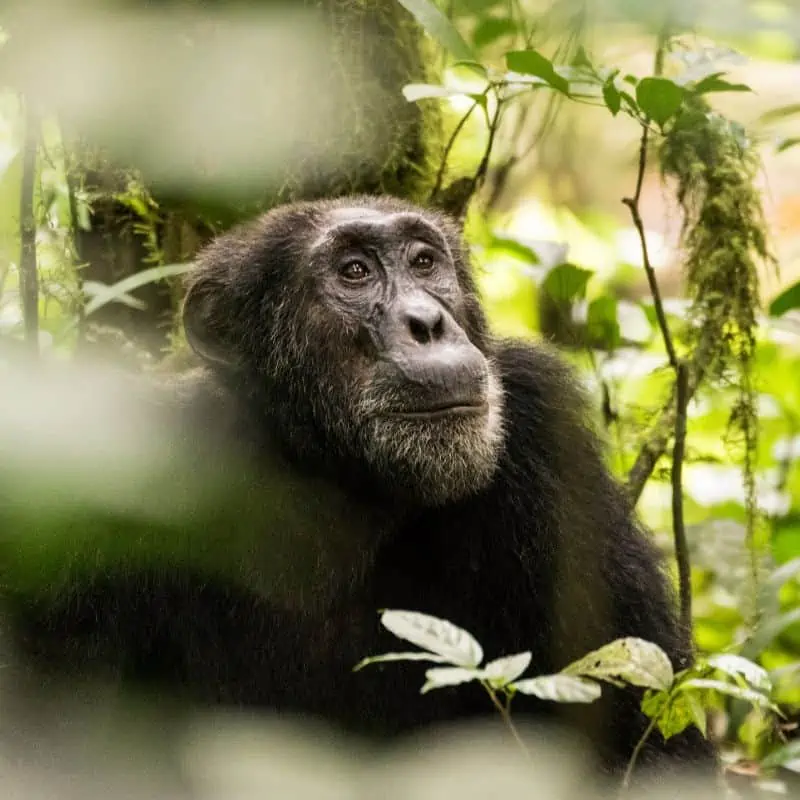
Appearance
Naturally bigger, bulkier, broader in the shoulders, and with more pronounced muscles, gorillas are easy to spot. Additionally, adult male gorillas have silver hair as they age and are primarily covered in coarse dark hair.
Chimps have light pink and tan skin on their palms and faces, which gorillas don’t have.
Chimps also have pronounced ears on the side of their head, while gorillas have smaller ears situated lower on the back of their heads.
Habitat and diet
Chimps prefer building their nests in trees and sleeping there, while gorillas stay closer to the ground.
Chimps are also more likely to add insects and meat to their diets, while gorillas prefer to focus on plant-based meals.
Similarities between the two great apes
Highly social
Both live in troops, have close relationships, and carry their babies around for a while after birth.
Their interactions depend on the group hierarchy, with the dominant male at the top.
Grooming is common to both groups, cements bonds, and is seen as a way of establishing hierarchy.
Intelligence
Both chimps and gorillas are smart and capable of fundamental problem-solving and intricate communication, and both apes can comprehend and use tools.
Scientists have also observed both groups showing deep emotions and grieving when they lose a mate – this indicates above-average animal intelligence.
Shared DNA with humans
Although chimps are closer in genetic structure to humans than gorillas, both are more than 98% in shared genetic materials.
It’s easy to spot similarities between humans and chimps and gorillas, too, with facial expressions and tool usage at the top of this list.
Great apes: Both chimps and gorillas share distinct ape-like features, including not having a tail and sometimes walking upright.
Endangered species
As they share the same primary threats, namely humans and human actions, chimps and gorillas are considered endangered.
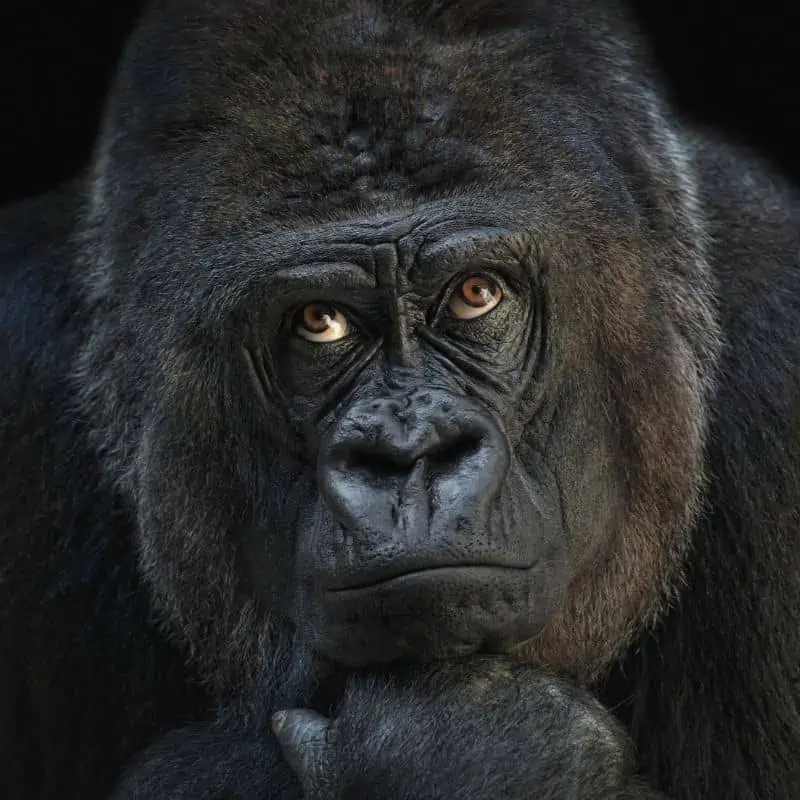
Chimp vs gorilla: who is stronger?
Based on sheer size, gorillas far outweigh chimpanzees and stand tall. They have a much more imposing presence, thick muscles, and broad stature.
While chimps are under 200 lb and stand around 5.5 feet when upright, gorillas are taller at around six feet and weigh up to 500 lb In mass and muscle alone, the gorilla is far stronger.
It’s worth noting that chimpanzees are already many times stronger than human males, so while they shouldn’t be seen as weak by any means, it puts the strength and power of a gorilla into perspective.
Male silverbacks, especially when threatened, are extremely dangerous. Despite gorillas being the strongest, an attack from either a chimp or a gorilla will likely prove fatal if it cannot be stopped.
Gorilla vs chimp: who is smarter?
Both chimps and gorillas have been extensively studied for their intellect and ability to communicate with humans.
While there have been successes in both cases, most research seems to point to chimpanzees being just a little smarter.
Physiologically, the chimpanzee’s brain is larger than that of a gorilla. After time spent with the smaller ape, they are adept at quickly picking up new interactive skills.
They also show the ability to be cunning and play tricks on their pack mates.
Chimpanzees have also proven incredible initiative in developing tools that will serve their purpose.
That being said, gorillas are nothing to sniff at when it comes to smarts, and given their ability to learn sign language to communicate with humans, show understanding for puzzles and stories, and develop relationships with other species, they are some of the most intelligent animals on the planet, too.

Final thoughts on the differences between chimps and gorillas
Great apes are fascinating creatures, especially for their human-like traits, which include thought processes, problem-solving, using tools, and showing care and loyalty to their family members.
And while they both share some genetic material with humans, they are quite different in more than just size.
Preferring life in the tree-tops, chimps are happy to add meat to their diet, while gorillas prefer staying firmly on the ground and pursuing a more vegetarian meal plan.
Chimps generally have a longer lifespan than gorillas too.

I find them incredible fascinating****””!!!!*”*****”***It’s sad both Gorillaz and chimpanzees are endangered species. I only wish humans would realize that their God’s given creatures to man and they should be respected as such.
They are fascinating!